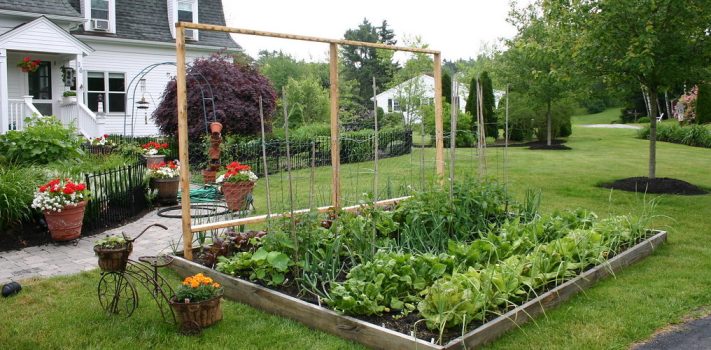As we have just passed the midpoint of winter, it’s time to be laying plans for the spring. Whether you are already residing at a rural retreat or it’s still a future goal, there opportunity to improve on your home’s self-sufficiency and food production.
Where can you start with self-sufficiency if you’re still on a suburban lot? You must be more considerate of neighbors, local ordinances, and homeowners’ Associations (HOAs). But even so, there’s great potential for supplemental food production even on a city lot. A few projects to consider:
Replace ornamental trees with productive fruit or nut trees. With minimal impact to the “curb appeal” of your property, fruit or nut trees can provide a valuable crop once established. Check with a local nursery to select appropriate varieties for your climate. Be sure to choose a location that will accommodate the tree’s future growth.
Plant perennial bushes and vines. While less subtle than trees, perennial bushes and vines are another excellent low-maintenance food production option. Stick with thornless varieties, unless you want them to serve double duty as an intimidating hedge. Note that raspberries and blackberries are notoriously aggressive and will need to be isolated from other garden areas or cut back regularly.
Raised beds allow for intensive growing of annual vegetables and herbs. Each year, we find that we don’t have quite enough garden space, and add a new bed or two. Raised beds can be built or purchased, preferably constructed from cedar or other rot-resistant material, though many other do-it-yourself options exist. To fill them cost-effectively, consider buying a soil and compost blend from a local landscape supply company rather than bagged potting mix from the big box store and make your own amendments.
Maintaining productive soil requires fertilizer. While it’s helpful to buy prepared fertilizers, worm castings, or other amendments as needed, home composting helps recapture nutrients from household refuse that would otherwise go to waste. Establish a backyard compost heap (avoiding meat scraps or other materials that will produce odors or attract pests), and you’ll have an ongoing fertilizer supply for your garden.
Backyard livestock options may depend on your local ordinances or HOA. The biggest limitations are space to keep them in sanitary conditions, and the ability to produce enough feed. Chickens are justifiably popular, while others have had success with backyard rabbits.
Backyard poultry are an excellent first line in your recycling efforts. As well as producing eggs and meat, they also create rich compost. While not as omnivorous as pigs, chickens can have their feed supplemented with leftovers and take a first pass on garden waste. (Take care to provide adequate poultry manure aging, rather than putting fresh manure directly into the garden). We find that backyard chicken keeping is much more pleasant with a fully covered coop and enclosure with a heavy layer of straw litter.
Ultimately, with any backyard food production, remember that it supplements a well-stocked pantry. Even on a larger acreage, producing a large volume of calories or providing a complete diet is challenging. If you’re in a situation of leaning on your backyard farm to keep you fed, it’s going to be difficult to obtain fertilizer or animal feed as well. Aim to minimize external inputs and make your efforts self-sustaining.
Total self-sufficiency is not for everyone, but making yourself more resilient and your property more productive is something that everyone can do.










